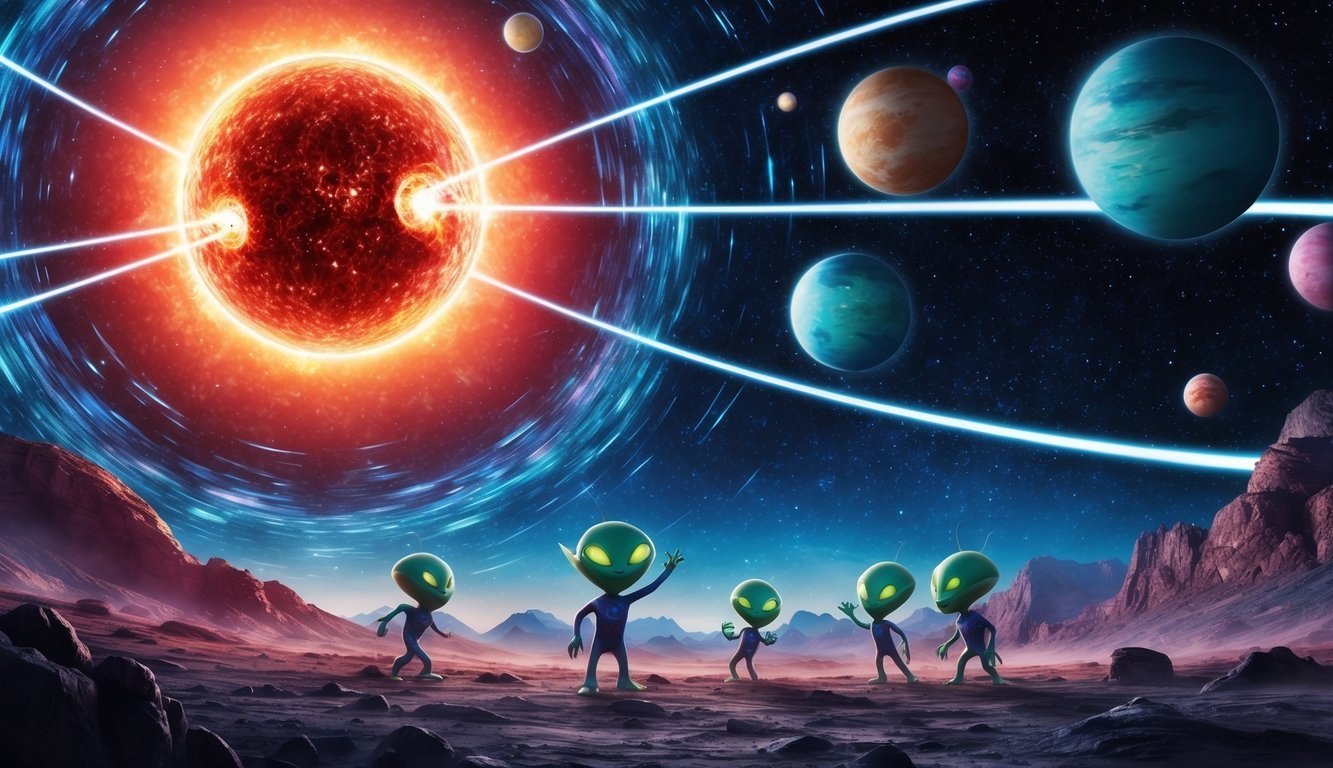In an exciting development, astronomers are making significant strides in their quest to understand fast radio bursts (FRBs)—mysterious signals first detected in 2007.
These bursts, which last only a fraction of a second, unleash an incredible amount of energy, often outshining entire galaxies in the process.
Tracing the Origins of FRBs
Since their discovery, scientists have cataloged thousands of FRBs.
These celestial messages originate from various locations, ranging from our very own Milky Way galaxy to distant regions as far away as 8 billion light-years.
However, the true source of these brilliant cosmic events has largely remained a mystery—until recently.
A research team from the Massachusetts Institute of Technology (MIT) has made groundbreaking progress in tracing the origins of at least one of these enigmatic signals.
Their findings, published in the esteemed journal Nature, focus on a specific FRB from a galaxy about 200 million light-years distant.
The Role of Scintillation
What sets their research apart is its emphasis on the scintillation of FRBs—a phenomenon akin to the twinkling of stars.
By closely examining fluctuations in brightness, the team discovered that one particular burst, identified as FRB 20221022A, originated far closer than previously thought.
In fact, it came from just 10,000 kilometers away from a rapidly spinning neutron star—a distance that, for perspective, is substantially shorter than the span between New York City and Singapore!
This newfound closeness implies that the burst likely emerged from the neutron star’s intense magnetosphere, a chaotic environment filled with powerful magnetic fields.
The team’s findings represent a significant advancement in our understanding of where FRBs may arise, offering compelling evidence that these phenomena can be linked to the tumultuous surroundings of such super-dense celestial objects.
Kenzie Nimmo, the lead investigator and a postdoctoral researcher at MIT, highlighted the unique conditions surrounding neutron stars.
These extreme environments create immense magnetic fields that typically prevent bright radio emissions from escaping.
Nevertheless, the research team found that energy stored within these fields could twist and reorganize, ultimately releasing radio waves that can be detected from vast distances.
Implications for Future Research
The surge in FRB discoveries since 2020 can be attributed to the Canadian Hydrogen Intensity Mapping Experiment (CHIME).
This cutting-edge radio telescope array, consisting of four stationary receivers, is adept at capturing these cosmic signals.
While several theories about FRB origins have been proposed, the MIT researchers focused on scintillation—an optical effect in which light shifts as it traverses different mediums, giving it a twinkling effect.
This effect is more pronounced in smaller or farther-away celestial objects, enabling the scientists to estimate the FRB’s distance.
By scrutinizing the rapid brightness changes of FRB 20221022A, which lasts about two-thousandths of a second—a typical duration for such bursts—the researchers observed striking polarization characteristics.
These traits suggested a rotating emission source, similar to pulsars, which are highly magnetized and spinning neutron stars.
To validate their hypothesis, the team analyzed the scintillation data and detected clear brightness fluctuations, confirming that the FRB was indeed twinkling.
They identified gas between the telescope and the FRB that acted like a natural lens, enabling them to narrow down the burst’s origin.
Ultimately, they estimated that the source of the burst was confined to a remarkably small area of around 10,000 kilometers.
Nimmo noted that this close proximity stands in stark contrast to expectations set forth by other theoretical models.
If FRBs were produced by shockwaves, they would likely originate from much greater distances. Dr. Masui likened the precision of measuring such a small area from an impressive distance to gauging the width of a DNA molecule from the surface of the moon.
This groundbreaking research marks the first solid evidence that FRBs can stem from the tumultuous magnetic fields surrounding neutron stars.
The implications of these findings excite the scientific community, as they hint at a way to unlock the complex physics behind these captivating bursts.
Thanks to CHIME’s ability to detect multiple FRBs each day, the team’s discoveries suggest a diverse range of origins and behaviors for these cosmic wonders.
The scintillation technique developed by the MIT researchers positions them to further unravel the mysteries of FRBs, paving the way for deeper exploration into the fascinating expanses of our universe.
Source: Goodnewsnetwork


